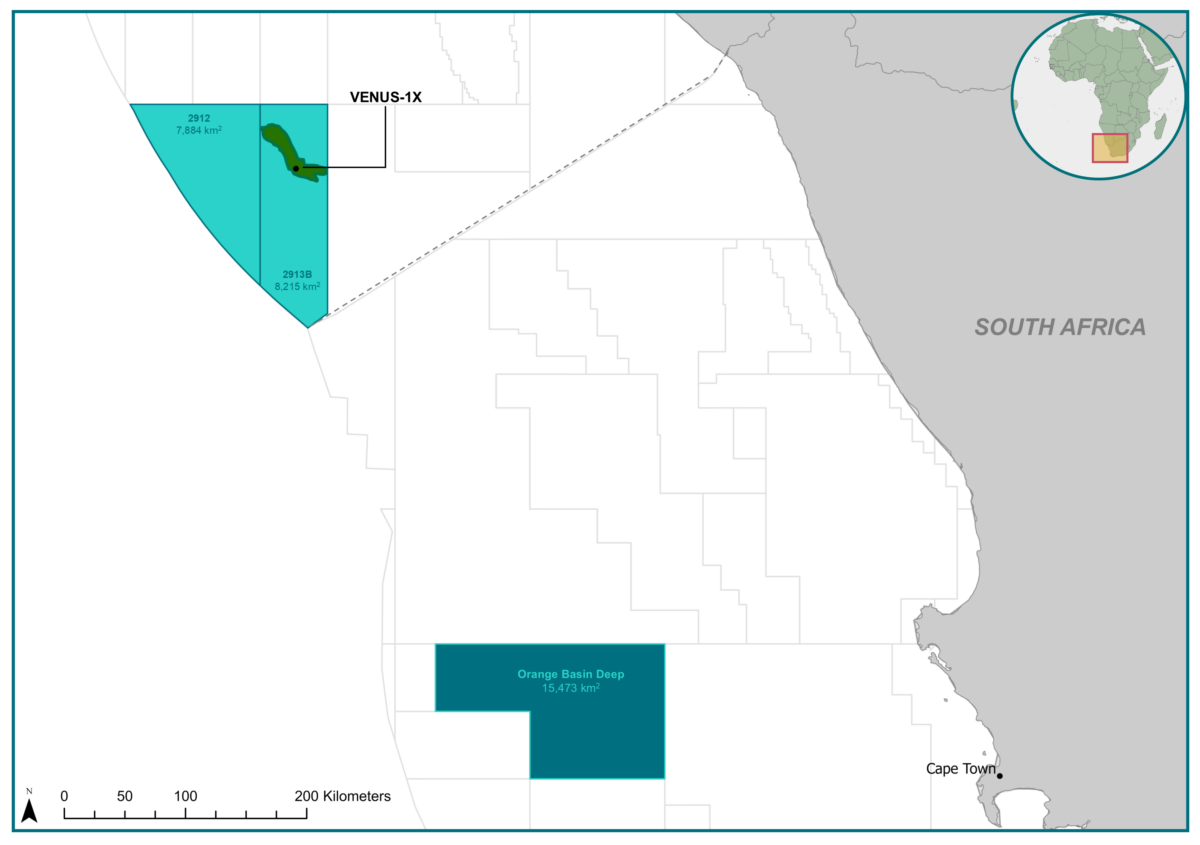| Licence | Exploration Right reference 12/3/335, Orange Basin Deep |
| Acreage | 13,927 km2 |
| Water Depth | 2,700m to 4,200m |
| Impact Interest | 22.22% |
| Partners | TotalEnergies EP South Africa B.V. (TEEPSA): 48.61%, QatarEnergy: 29.17% |
The Orange Basin Deep (OBD) block forms South African Exploration Right 12/3/335, located offshore western South Africa, within the Orange Basin (Figure 1), where the recent 2022 Venus and Graff discoveries were made. The licence was initially awarded to Impact as a Technical Cooperation Permit in 2016, followed by an application for an Exploration Right, which was granted in 2017. The entire licence covers approximately 15,500km2 in water depths of up to 4,200 metres.

Figure 1: Impact acreage map for the Orange Basin
In June 2017, world-class Operator TotalEnergies acquired 77.78% of the OBD block, expanding their position in the Orange Basin and bringing additional technical expertise to Impact’s Orange Basin portfolio. Following the farm-in of TotalEnergies in 2017, QatarEnergy farmed-in to the OBD block, acquiring 29.17% equity with Total retaining 48.61% equity.
The Orange Basin Deep block sits within the same offshore basin as the major Venus and Graff discoveries, the Orange Basin, and encounters several of the same plays. Orange Basin Deep sits on oceanic crust, believed to date back to approximately 135Ma, that sets up the ideal environment for the formation of a petroleum system.
In the early Cretaceous, the southern South Atlantic (the ocean in which the OBD block lies) existed as a restricted, anoxic basin, creating the ultimate conditions for the deposition of a prolific, high quality source rock – the Kudu shale. The presence and quality of this thick, world-class source rock is proven in the nearby DSDP 361 well and, most recently, the Venus-1X well.
These two important wells also provide evidence for Apto-Albian aged basin floor fans existing throughout the Orange Basin. The Apto-Albian reservoirs of the southern Orange Basin, where the OBD licence sits, are best represented by the DSDP 361 well where the sands are interbedded with the source rock in this location.
The deposition of a thick section of Mass Transport Complexes (MTCs) resulting from the instability of the Southern African margin in the Upper Cretaceous provided additional clastic reservoir targets at this level, which were encountered in the northern Orange basin in the Graff-1X well.
Widely spaced 2D data covering the OBD block has been used to identify two geological levels of prospectivity – a deeper buried level in the Lower Cretaceous in the form of Aptian aged basin floor fans, equivalent to the Venus discovery in the Namibian Orange Basin, and additional prospectivity in the Upper Cretaceous in the form of several Graff-equivalent leads, that share a common trapping mechanism with the major Namibian discovery.
Both levels of prospectivity are charged by the prolific Kudu shale source rock, with a combination of trapping styles. The Apto-Albian reservoirs are stratigraphically trapped and ponded against the western flank of the outer high. The Upper Cretaceous, Graff-like reservoirs are structurally trapped by thrust faults splaying off the large MTC frontal thrust.